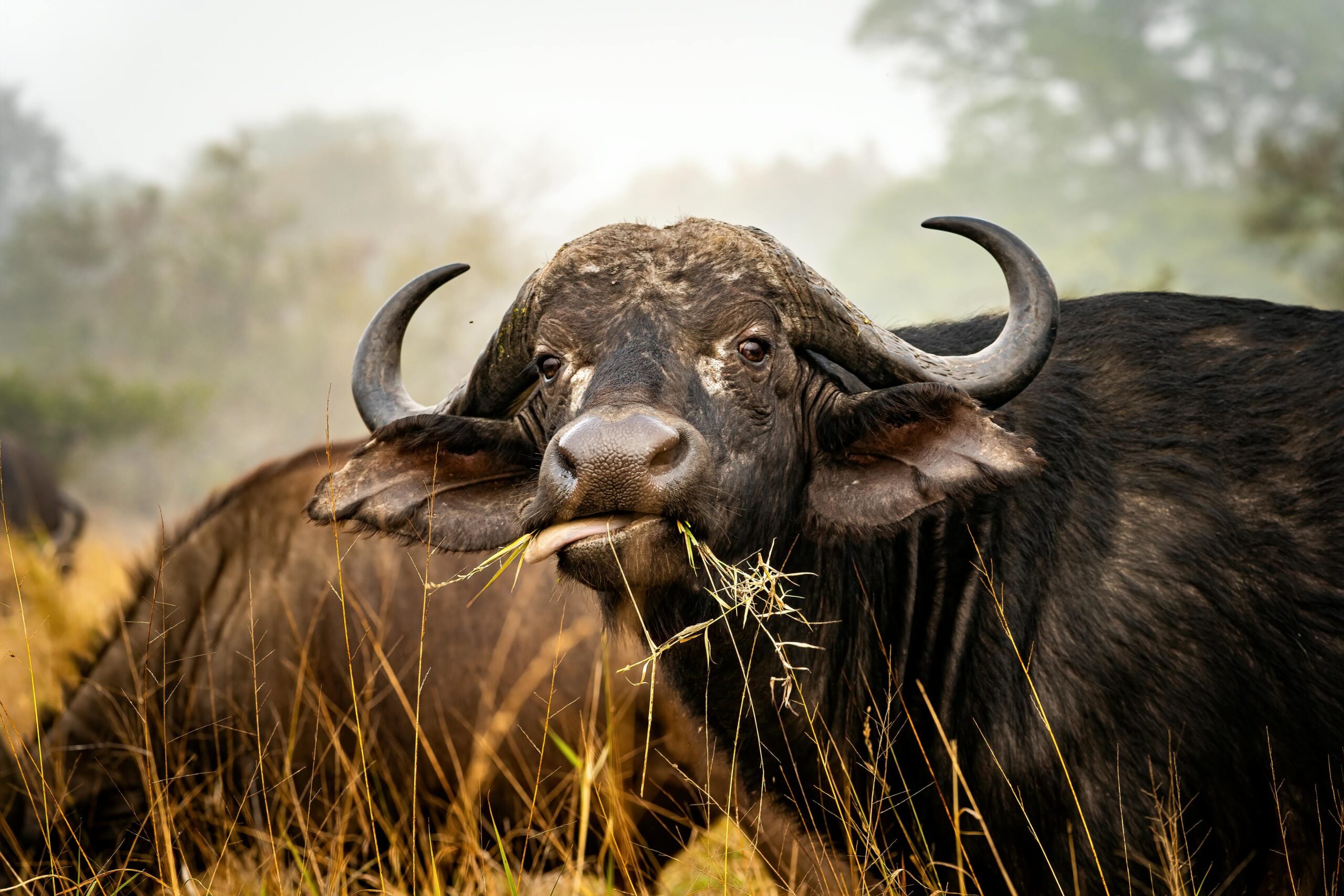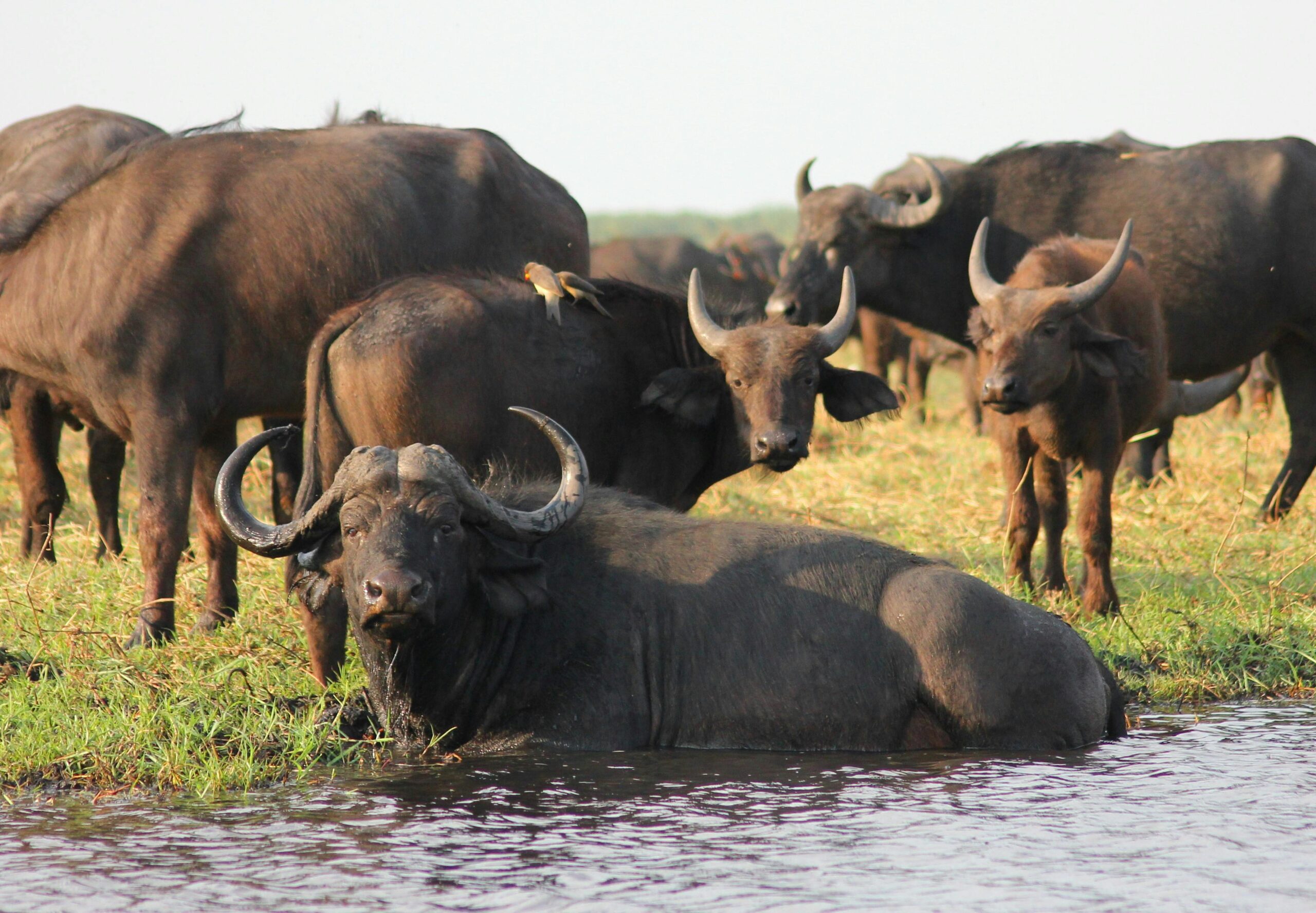Mount Kenya, a UNESCO World Heritage Site, is a treasure trove of biodiversity and natural beauty. Among its most fascinating inhabitants is the African buffalo, a symbol of strength and resilience. These impressive animals roam the slopes of Mount Kenya, embodying the untamed spirit of the wilderness and offering visitors unforgettable wildlife encounters.
Buffaloes, with their imposing presence and unique social behaviors, add to the allure of exploring Mount Kenya’s diverse ecosystems. Whether you’re a wildlife enthusiast, a nature lover, or simply someone seeking a deeper connection with the wild, buffaloes are among the mountain’s most captivating creatures.
Meet the African Buffalo: A Formidable Presence
The African buffalo, scientifically known as Syncerus caffer, is one of the “Big Five” animals of Africa, revered for its power and unpredictable nature. On Mount Kenya, these buffaloes thrive in the montane forests and grasslands, where they graze and interact in dynamic herds.
Weighing up to 900 kilograms, with thick horns and a muscular build, the African buffalo is a formidable presence. Despite their size, these animals are surprisingly agile and highly adaptable, thriving in the diverse habitats found on the slopes of Mount Kenya.
Habitat: Where to Spot Buffaloes on Mount Kenya
Buffaloes on Mount Kenya are commonly found in the lush montane forests, open grasslands, and even along water sources like rivers and swamps. Their range covers the lower to middle slopes, where the vegetation provides ample food and shelter.
- Mount Kenya Forest Reserve: This protected area is one of the best places to encounter buffaloes. Their tracks and signs are often visible on hiking trails, and you may spot them grazing in clearings.
- Northern and Western Slopes: These areas, with their open grasslands, are prime grazing territories for buffaloes, offering excellent opportunities for wildlife viewing.
- Elephant Corridors: Buffaloes often share these migration paths with elephants, making them hotspots for wildlife activity.
Social Behavior: The Dynamics of Buffalo Herds
Buffaloes are highly social animals, living in herds that can range from a few individuals to several hundred. Their group dynamics are fascinating to observe:
- Herd Structure: Herds are usually led by dominant females and include calves, juveniles, and adult males. Older bulls often leave the herd to live alone or in small bachelor groups.
- Protective Instincts: Buffaloes are known for their strong protective instincts. When a predator threatens the herd, they form a defensive circle around the vulnerable members, showcasing their remarkable teamwork and resilience.
- Communication: Buffaloes use a range of vocalizations, body language, and even scent to communicate with one another. Observing these interactions provides insight into their complex social lives.
The Buffalo’s Role in Mount Kenya’s Ecosystem
Buffaloes play a vital role in maintaining the health of Mount Kenya’s ecosystems:
- Grazing Impact: As grazers, buffaloes help regulate vegetation growth, preventing overgrowth and promoting biodiversity.
- Seed Dispersal: Buffaloes contribute to seed dispersal by consuming plants and excreting seeds, aiding in forest regeneration.
- Prey for Predators: Buffaloes are a crucial part of the food chain, serving as prey for predators like lions and hyenas. Their presence supports the balance of the ecosystem.
Buffaloes and Conservation
Despite their resilience, buffaloes face challenges that threaten their survival, including habitat loss and human-wildlife conflict. Conservation efforts on Mount Kenya aim to address these issues and protect the buffalo population:
- Habitat Protection: Initiatives to preserve and restore the mountain’s forests and grasslands provide buffaloes with the resources they need to thrive.
- Human-Wildlife Conflict Mitigation: Programs that educate local communities and promote coexistence are reducing incidents of conflict between humans and buffaloes.
- Anti-Poaching Measures: Strong anti-poaching efforts help safeguard buffaloes and other wildlife from illegal hunting.
Tips for Spotting Buffaloes on Mount Kenya
- Go with a Guide: Local guides have in-depth knowledge of buffalo behavior and habitats, ensuring a safe and rewarding wildlife experience.
- Stay Alert: Buffaloes are powerful animals and can be unpredictable. Always observe them from a safe distance.
- Visit Watering Holes: Buffaloes frequently gather around water sources, especially during the dry season, making these prime spots for sightings.
Why Buffaloes on Mount Kenya Are Special
What sets the buffaloes of Mount Kenya apart is their ability to thrive in the mountain’s unique environment. Their adaptability, strength, and social dynamics make them a symbol of resilience and an essential part of the region’s wildlife heritage.
Watching a herd of buffaloes move gracefully through the forest or graze peacefully in the grasslands is a humbling reminder of nature’s raw power and beauty. It’s an experience that connects you to the wild and leaves you with a profound appreciation for these magnificent animals.




